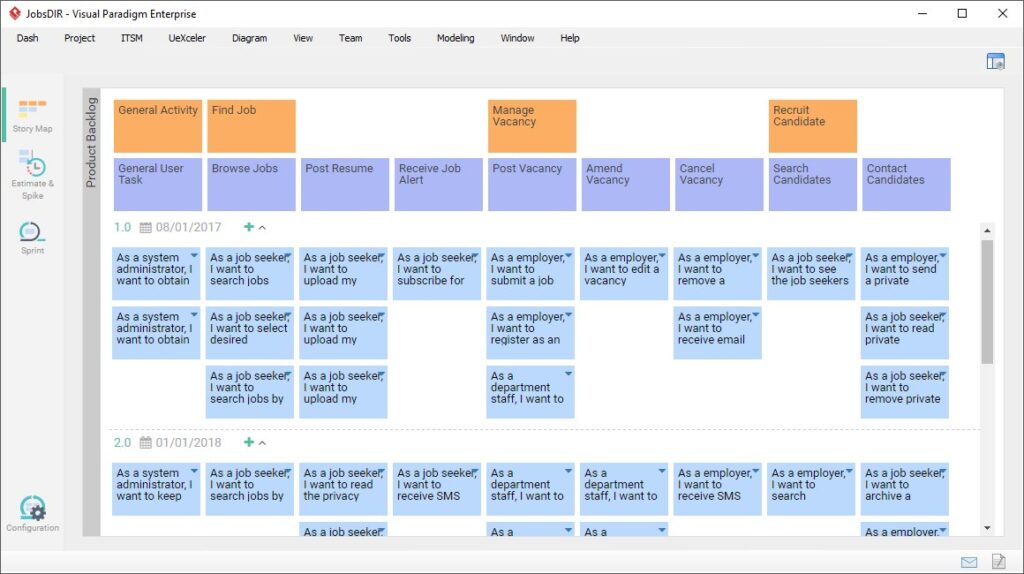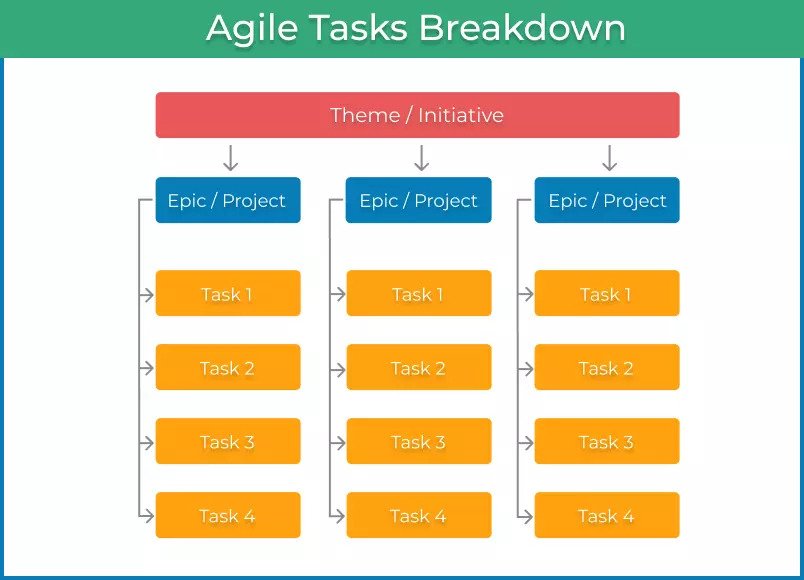Are you curious about the relationships between Agile stories, epics, and initiatives?
Then you’ve come to the right place.
Agile project management promotes several tools which give rise to a meticulous approach to achieving a business’s goals on a grand scale.
Some of these tools include user stories, epics, and initiatives that build upon one another to drive momentum and progress towards the big picture.
As our digital world continues to grow, the necessity for robust planning mechanisms becomes pertinent.
Agile exists to offer an efficient methodology to create scope and structure work for the software development process.
In this article, we take a close look at how to maximize your planning optimization through Agile stories, epics, and initiatives.
Let’s get started.
What are User Stories?
A user story is the smallest measurable building block of work in the Agile framework. They focus on small chunks that start at the bottom, working their way through the structure as organizational tasks. These types of tasks include:
- Adding a feature to a landing page
- Adding functionalities to the onboarding process
- Creating a vertical view for a feature

Credits: Visual Paradigm
The key difference between stories and traditional to-do lists is that you write stories from the user’s perspective.
This enables more innovative thinking for your development team, and keeps the project user-focused, giving way to a complete user experience.
As [who: an apple user], I want to [what: sync data with an Apple Watch] so that I [why: count calories burnt more].
Although every feature has a deadline, developers are free to complete several user stories in a given time frame. If a user story is taking too long to finish, it is wise to break it into smaller tasks to make it more manageable.
What are Epics?
Epics are collections of user stories that come together to create a broader piece of the puzzle. They span across teams and projects and have a flexible scope.
Components that feed into an epic include:
- Time: Product managers view anything that takes longer than hours or days as an epic
- Culture: Team culture dictates whether a user story is a quick task or a week-long project.
- User persona: Each unique user story correlates with a user persona.
- Ordered steps: The process is broken down to create a user story for each step.
An example of an epic for your first MVP of a feature is ‘January Launch’. All the user stories under that epic represent what needs you must achieve before launch.
Epics are the practical drivers behind your Agile team methodology. Understanding where they fit into the context of the bigger picture allows the product owner to build momentum.
What are Initiatives?
Initiatives consist of epics in the same way that the basic unit of an epic is a story. However, an initiative brings forth a higher level of project completion than an epic.

Credits: Kanbanize
Initiatives involve longer timelines, ranging anywhere from several quarters up to a year.
Building from stories into epics into initiatives, it is possible to map out a specific plan for achieving the complete scope of your initiative.
For example, let’s say your company wants to increase total revenue by 5%. This is a huge order for any individual user story or epic, but by combining them together, you reach an initiative.
Leveraging Stories & Epics to Scope Your Project
While epics and smaller stories help you organize your team’s work, they also map out the project’s budget with accuracy.
The reasoning is straightforward. When you break work into small chunks and estimate each piece one task at a time, you make the entire process much easier and more transparent.
When creating an estimation to give your client, you predict the number of hours needed for each user story and multiply that by the expected number of epics, which then feed into the overarching initiative using accurate tech documentation.
In an ideal world, stories turn into an epic within 1 to 3 months. There is no exact number since every agile team and project is unique. However, an average scope is around 15 stories to an epic.
This ensures that the product owner continues moving development along while building project momentum.
Now that you understand how multiple stories correlate with different epics, let’s talk about the detailed definitions of each.
Epics, Themes, and Initiatives: Benefits
Agile initiatives, epics, and project stories structure work to manage the scope of any project. Here are their 3 main benefits:
1. Strategic Decision-Making
A story point is a fundamental unit of measurement in Agile. They aid in calculating the effort required to complete a specific backlog item, quantifying the number of resources, and determining the length of time that an epic takes. As a result, the development team prioritizes its time and resource allocation, giving way to the most streamlined strategy for achieving the objective.
2. Prioritization of Goals
Initiatives are synonymous with essential outcomes of the product roadmap, while user stories are strategic units within the development process.
To optimize these items within the roadmap while bridging gaps, you need epics to maintain momentum.
3. Improves Estimates
Once you have an idea of how much your agile team accomplishes within a given time frame, it’s easier possible to know what your team achieves during a user story and then an epic.
You know in advance how to plan out a timeline to contain neither too much nor too little work. This leads to an accurate estimation of team capabilities, guaranteeing that your team maximizes its output while staying on budget.
Stories, Epics, Initiatives: Key Takeaways
Agile empowers teams to track each project and strategic initiative, creating a positive cascade of transparency from the top down.
By breaking work into small tasks, your team generates a clear structure of project tasks and concentrates on completing work faster.
This structure serves as a guide for the entire company, allowing for transparency of communication while harmonizing organization across development teams.